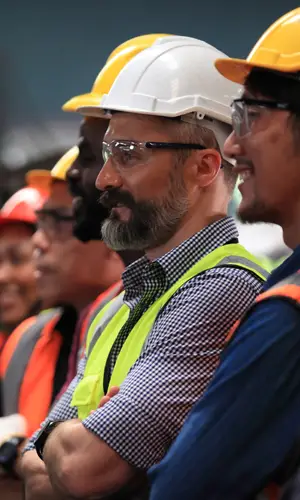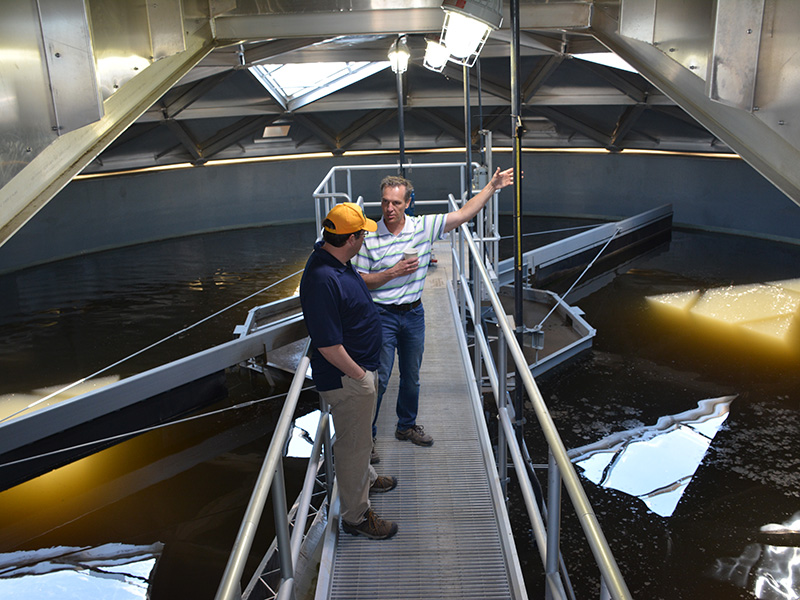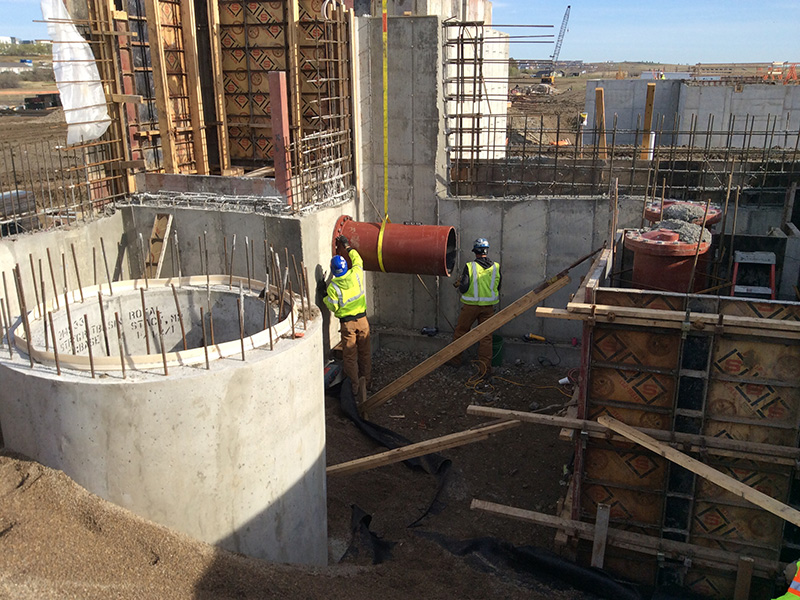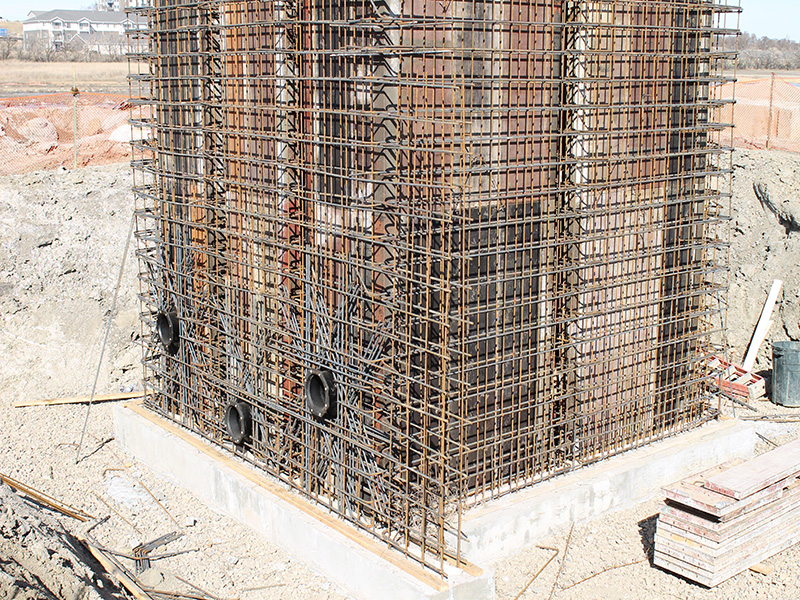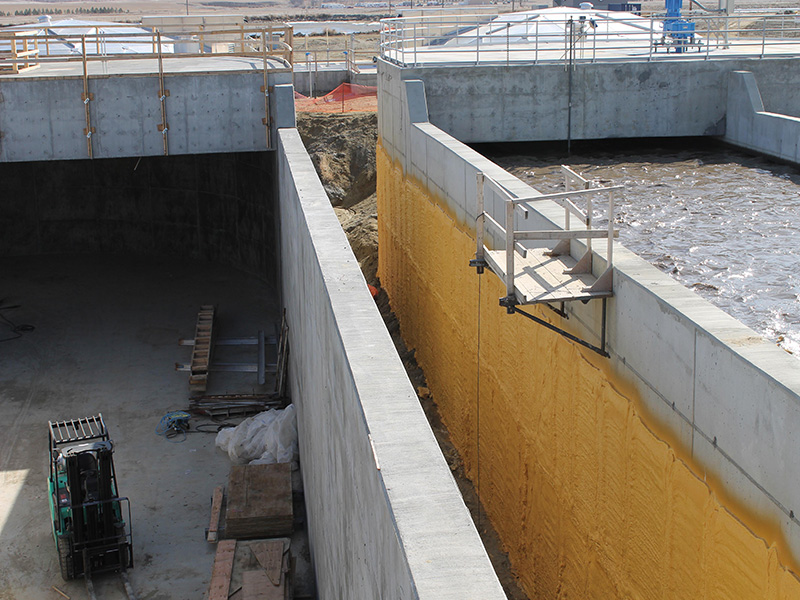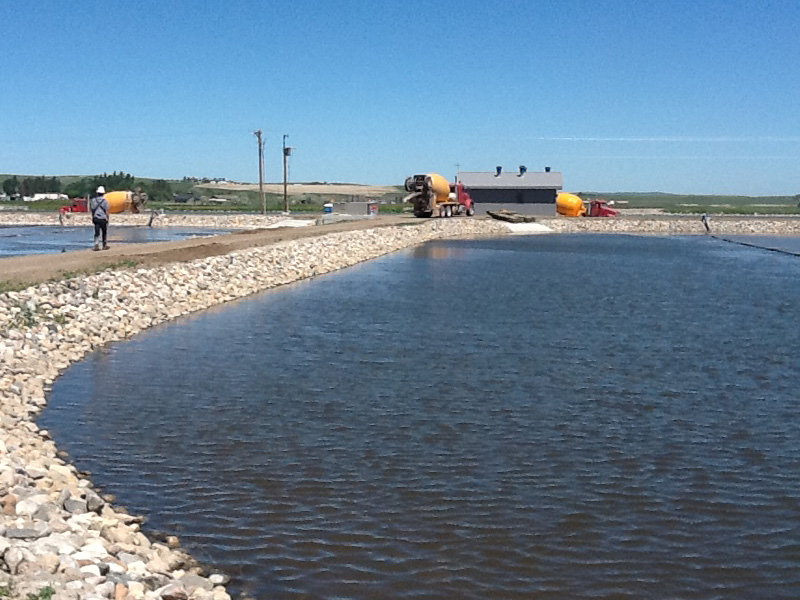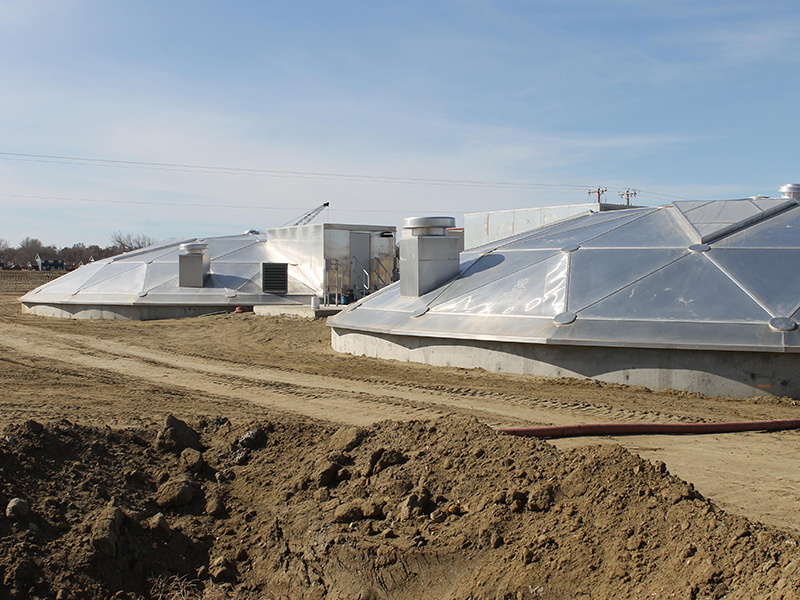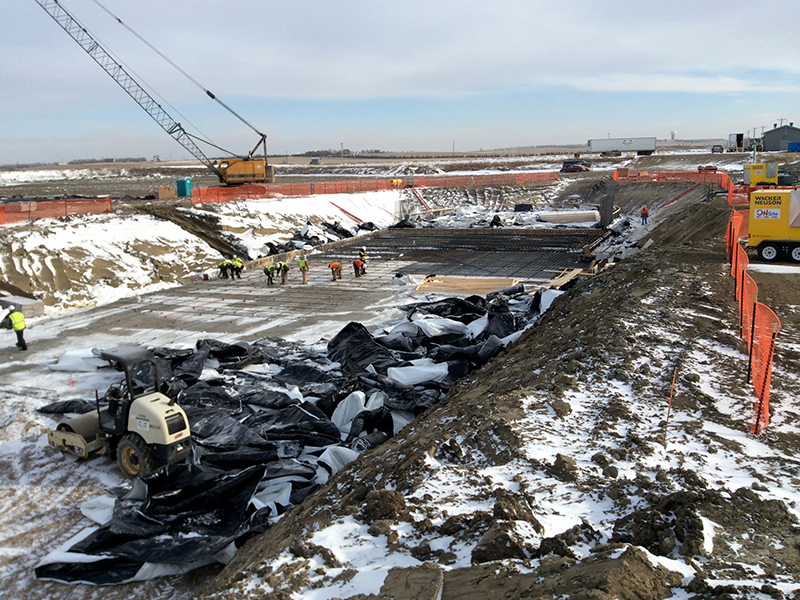WATER RESOURCE RECOVERY FACILITY
Watford City, North DakotaAbout the Project
Like many communities in Western North Dakota, Watford City is experiencing rapid growth. As a result of a phased Wastewater Collection and Treatment Facility Plan and Capital Improvements Plan completed by AE2S in 2010 to address the challenges, the City embarked upon phased improvements to its wastewater treatment facilities.Project Details
Date: 2014 – 2018
Client: City of Watford City
Key Project Elements
- Phased Approach
- First Continuous Discharge WRRF in ND
- Reuse of Existing Treatment Facility Components to Minimize Cost
- First Publicly Funded Municipal Infrastructure Project to Use CMAR
- Wastewater Reuse to Serve City Golf Course
- Biological Nutrient Removal (BNR) Activated Sludge for Nutrient Removal
New WRRF to Serve City
With limited land availability, expansion of facultative pond storage capacity was not a feasible alternative. Therefore, in early 2014, the design of a mechanical Water Resource Recovery Facility (WRRF) was initiated.
Key project components of the first phase of the mechanical WRRF include master lift station pump capacity increase, new preliminary treatment with fine screening and grit removal, biological phosphorus removal, total nitrogen removal, extended air biological treatment, two final clarifiers, return and waste activated sludge pumping, chlorination/dechlorination disinfection facilities, effluent aeration, and effluent pumping and flow metering.
The first phase of the mechanical WRRF was designed to serve a population of 7,500, with future phasing laid out to serve an ultimate population of approximately 30,000.
Overcoming Challenges of Discharging to an Intermittent Creek
Due to the high cost of land acquisition, construction of a continuous discharge mechanical WRRF was evaluated for economic and environmental viability. Considering the land acquisition, capital, and long-term operation and maintenance costs, construction of a mechanical WRRF had a lower net present worth cost than the other alternatives that were considered and represented the recommended solution to meet the City’s wastewater treatment needs.However, the facility’s receiving water, Cherry Creek, is an intermittent stream that does not always experience instream flow. This put Watford City in the unique situation of proposing to be the first continuous discharge WRRF in the State of North Dakota to discharge to an intermittent creek.
Successful Implementation of Construction Manager At Risk (CMAR) Process
AE2S developed a wasteload allocation model that incorporated the stream morphology and effluent flow and load characteristics to predict the impacts of the discharge on the receiving water.The Watford City WRRF is also the first publicly funded municipal infrastructure project in North Dakota to utilize the Construction Manager At Risk (CMAR) process for project delivery. The CMAR entity worked closely with AE2S during the design phase to provide constructability reviews, as well as develop a guaranteed maximum price (GMP) for construction of the WRRF. The construction project is complete, on time, and on budget.
Cost-Effective Design Strategies
A key focus during the design of the WRRF was to minimize cost while maximizing reuse of existing infrastructure. Several existing wastewater treatment facility components were repurposed for inclusion into the mechanical WRRF project. First and foremost, the mechanical facility was constructed within the footprint of one of the City’s existing lagoon cells.Larger influent pumps were installed in the master lift station, allowing the existing wetwell to be kept in service. The existing aerated ponds were repurposed into biosolids treatment and storage ponds, and the existing control structures will be retrofitted to serve as inlet and decant control structures.
Additional piping was added to the existing blower discharge to provide air to the new effluent aeration system. The existing SCADA system was expanded to serve the new components of the mechanical WRRF.

